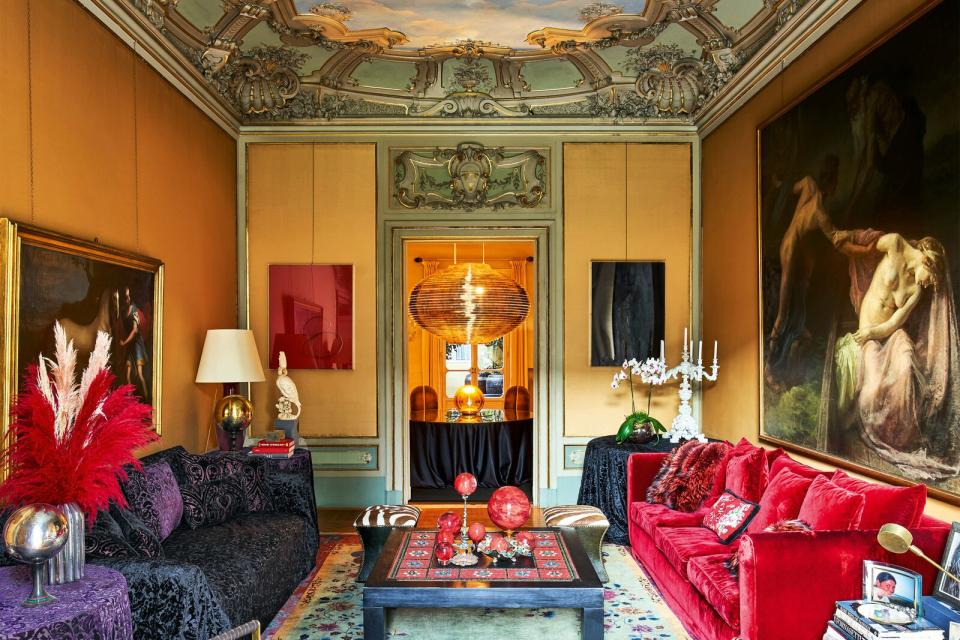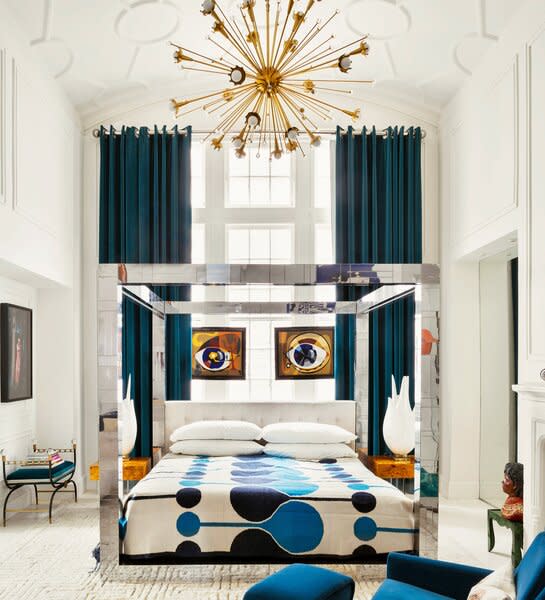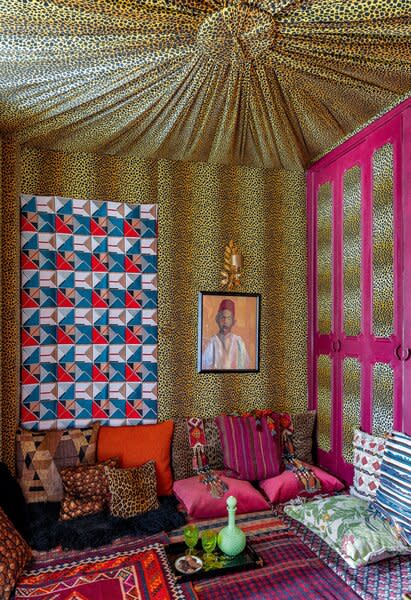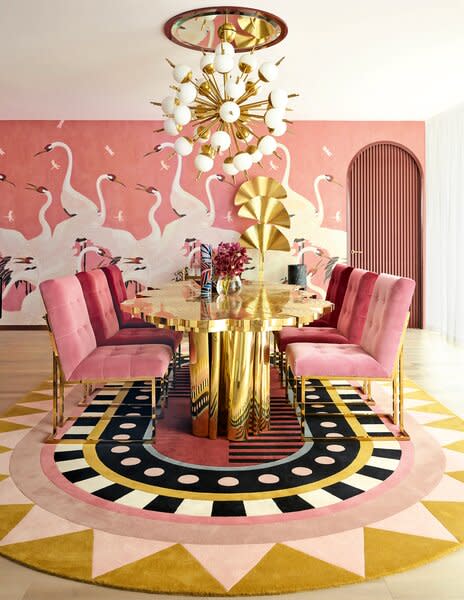Maximalism Will Bring Joy to Your Everyday—But Only if You Let It
A new Phaidon book celebrates the colorful evolution of the "more is more" aesthetic.

Maximalism isn’t just a design style. It’s an attitude. At least, it is according to Simon Doonan, the author, TV personality, and former Barneys creative director who penned the intro to Phaidon’s aptly titled new book, Maximalism: Bold, Bedazzled, Gold, and Tasseled Interiors. In it, Doonan opines that, "Maximalists have no desire to seek approval from others. Their goal is to hypnotize onlookers into a state of adoring submission," reminding them that "you are here to admire and obey."
The opulent maximalist aesthetic has origins, Doonan explains, in over-the-top buildings like the pyramids of Giza and in the palazzos and public monuments of ancient Rome. Things really got going, though, during the Renaissance, when the opening of global trade routes led to an explosion in exhibitionist fashion and decor. Maximalism’s popularity has ebbed and flowed ever since, though it’s always been in vogue among those with a flair for the overstuffed and dramatic. You can see it in famous buildings like the Palace of Versailles or the Greenbrier Hotel in West Virginia. It’s also been upheld in the lives and lived interiors of famously camp personalities like Iris Apfel, Gianni Versace, and Trixie Mattel, whose Palm Springs outpost, the Trixie Motel, is among the book’s features.
Phaidon’s Maximalism highlights more than 200 deliciously detailed interiors, spanning about 400 years of history and a good portion of the world. A number of late interior designer Tony Duquette’s homes are featured, including Dawnridge in Beverly Hills. Doonan once visited Duquette there in an effort to convince the designer to sell his necklaces at Barneys, and when he was there, he said, he noticed "no signs of the contemporary world." In a true maximalist’s home, Doonan suggests, there’s no suggestion of "the realities of day to day existence," whether it’s a phone charger or a toothbrush. Maximalists, Doonan says, have "the ability to torpedo reality" in a way that’s "fabulously uncompromising."
Elsewhere in the book’s collection is a famous photograph of legendary fashion editor Diana Vreeland perched in her deep-red jewel box of a living room, the wallpaper, sofa, and drapes all clad in the same chinoiserie print. The photo comes mere pages after Doonan cites Vreeland’s famous line, "exaggeration is my only reality" and amid snapshots of other fabulously decorative spaces, like Graceland’s tropical-tinged Jungle Room or the bright-yellow and navy blue TV Room, where Elvis Presley would watch three sets at once because, like so many other maximalists, that’s just what he wanted to do.
Indeed, self-determination is pretty much the whole ethos of maximalism, whether you’re talking about the brocade and velvet rooms of the San Francisco home where late philanthropist and interior designer Ann Getty lived or the elaborately marbled interiors of the Topkapi Palace’s Turkish Harem, which were first decorated in 1666. Maximalism, Doonan writes and the book proves, is "decor without borders," especially in modern society, when a plethora of design styles are concurrently available. When taken to extremes, Doonan says, decor is "both fabulously pointless and wildly justified," with maximalism occupying "a world of surfaces and appearances, underpinned by profundity and positivity."
The quest for maximalism—for cushier seating, more luxurious draperies, beautiful vases, and custom-woven rugs—also isn’t just the purview of wealthy eccentrics. Maximalists can fill their interiors with a physical manifestation of their personalities, whether that means creating a space filled with your own wooden art, like late sculptor Wharton Esherick, or covering absolutely every inch of your home with black-and-white drawings, à la England’s Doodle House. Maximalism can be achieved with popsicle stick chandeliers and chewing gum walls just as easily as it can be captured with chinoiserie upholstery and Delft tiles.
See the full story on Dwell.com: Maximalism Will Bring Joy to Your Everyday—But Only if You Let It
Related stories:




